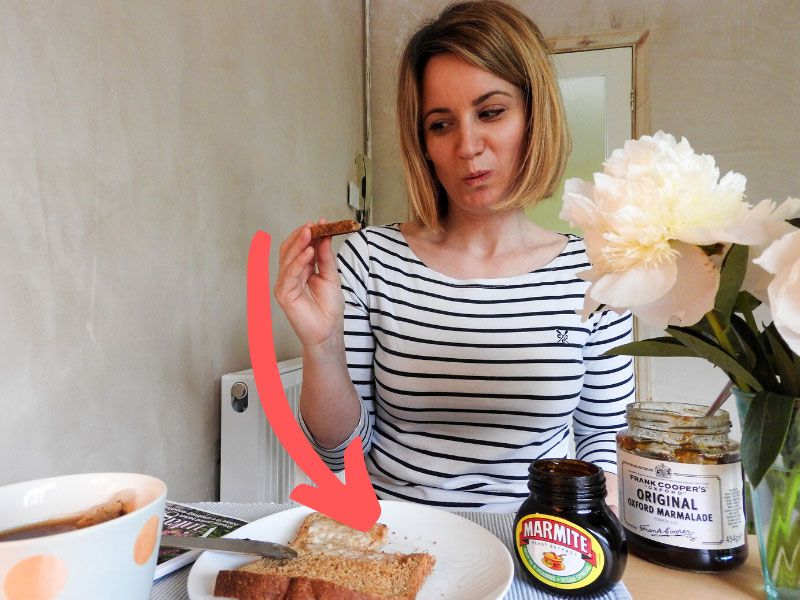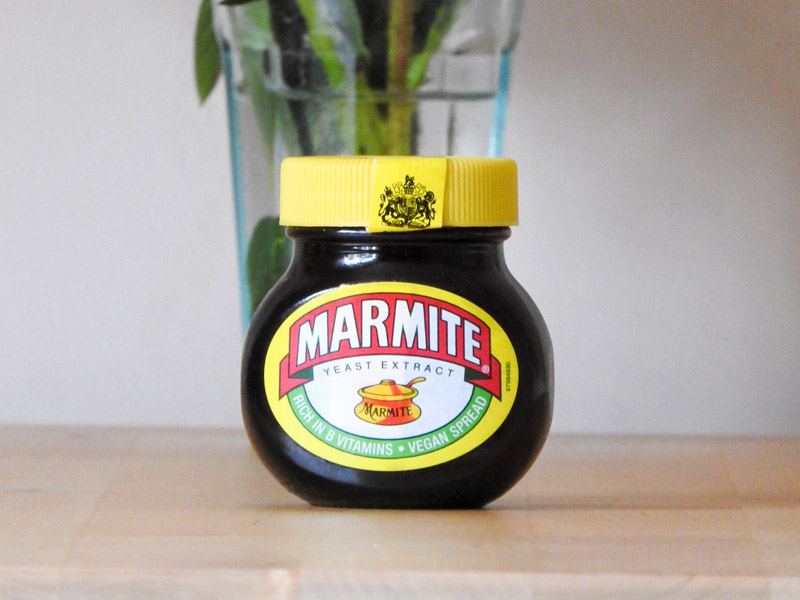The rugged mountains and coastline of North Wales attract many…
My story with Marmite and marmalade
What triggered to write this post, was a situation when my guests were not quite sure what that brown coloured, sticky stuff packed in a heart shaped tub was, that they saw at breakfast whilst staying in an English hotel. I explained with pleasure. Then I thought hm! Most of us might have heard the word ‘Marmite’ and marmalade, but I am not sure we know exactly what these are. OK, they are both part of the English breakfast table and are considered to be typically English, but what are they? In this post I am going to explain and share my story with Marmite and Marmalade.
Let’s begin with Marmite
There is an expression in English: ‘It is like Marmite’, meaning you either love or hate something. That’s right, not everybody is keen on Marmite in Britain either.
I was at high school when I had my first experience with Marmite. Employing native language teachers in Hungary (my home country) became fashionable those days and it was popular among teachers in the West to teach in the East. My school employed a lady from Britain. Helen loved Marmite. When we learnt about it during the lessons we could not imagine what Marmite is and how it possibly could taste. Helen said she had a jar and would bring it to the lesson and we could try it. Yaay – so we thought… By the way, let me remark, Helen could not be more English by keeping a jar of Marmite in her room at the teacher’s hotel which she had brought from the UK… 🙂
So it was a lesson number zero as we call it, meaning the earliest lesson of the day starting at 7am. We brought a slice of bread, Helen brought a jar of Marmite. We spread the sticky brown stuff on our bread and tried it. Oh… My… Word… Saying it was horrible would be an understatement! We had no idea how somebody could possibly love this stuff! It was rich, extremely salty and slightly bitter. Anyway, we accepted that Helen loved it and she did not feel offended that we did not.
That was my Marmite experience for my entire life, I thought, but when I met Bill he said, he loved Marmite, especially in a sandwich. He bought a jar when we moved together but it did not enter my head that I could try it again until the above mentioned story.
It started to intrigue me how exactly Marmite tastes…
It has been ages since I last tried, I thought, maybe I should give it another try. Bill told me to spread butter first on my toast and then marmite very thinly. One thing I knew for sure: I was not going to smear the whole toast with marmite! I wanted to try a small piece first.
It all went well until I spread the butter but then I started to raise my eyebrows when I spread the marmite. Then being as brave as I could be, I tried it. It was better than I expected it to be and it was not as bitter as I remembered. However, it was very salty. It was not horrible but it would not be my choice, so I changed for marmalade.

But before talking about marmalade, let’s have a closer look at Marmite.
Marmite is not even English in the first place. It was invented by a German scientist, Justus von Liebig in Dresden that the by-product of beer brewing can be concentrated and eaten. The English started to make Marmite in Burton-on-Trent, but they had to modify the process because British brewer’s yeast differed from the continental type.
But what does Marmite mean?
Marmite is in fact a French word and means cooking pot. Marmite was sold in earthenware pots and that can be seen in the trademark and used on the label of the jars.
So this typically English spread which has German origin and a French name 🙂 is traditionally eaten on bread, toast, biscuits or crackers. A popular combination is a marmite-cheese sandwich which is on Starbuck’s menu in the UK.

Marmalade
I must admit, after Marmite I did switch to marmalade which is a much better taste for my liking. Could not agree more with Paddington Bear, who loves marmalade!
In an ideal case marmalade is slightly bitter. I say in ideal case because as it often happens with jams, marmalade too can be far too sweet even if it is made of slightly bitter Seville oranges. It comes in different varieties: thinly cut and coarse cut peels or without peels. I find that the coarse cut is less sweet than the thinly sliced.

Interestingly, marmalade is not English either, it arrived in Britain from Portugal. Production of marmalade began after 1700 when citrus first began to be plentiful in Britain. According to a legend, a ship in Dundee, Scotland broke down and its cargo (Seville oranges) was salvaged by a local man who made marmalade from it. Historians do not support this theory.
Frank Cooper’s marmalade is my favourite because it is not too sweet. Frank Cooper lived in Oxford in the Victorian era and first he had a hatter and a hosier shop and later he changed to grocery. His wife, Sarah-Jane made 34 kg of marmalade to her own recipe in 1874 which sold like hot cakes. Cooper opened his marmalade factory in the town later.
Interesting fact: Cooper’s Marmalade was taken on Robert Scott’s Antarctica expedition. A jar was found buried in ice many years after the expedition in 1912.
~
One would think that sweet would win over salty meaning marmalade would sell better than Marmite. That’s not the case. Marmite is leading the selling statistics of jams, honey and spreads in the UK.




I grew up on Marmite and I love it. but the key is, as your husband? friend? (Bill) said, to spread it very, very thinly, so that you can still see the butter poking through*. Marmite is basically flavored salt and it’s delicious! When my son was little, he liked marmite and honey sandwiches. Go figure.
*like this: https://justhungry.com/2006/11/marmite_vegemite_andcenovis_a.html
I enjoyed reading about the history of both. Susan.
Thank you, Susan! Like I said, it was better this time than many years ago and I am not saying I won’t try it again. 🙂